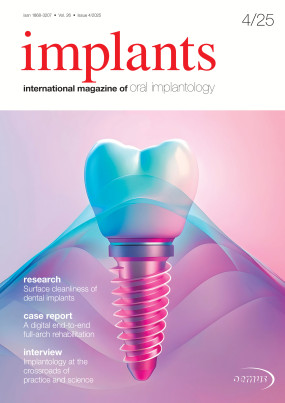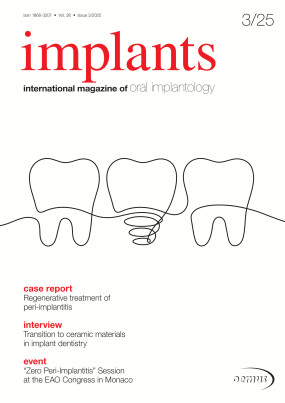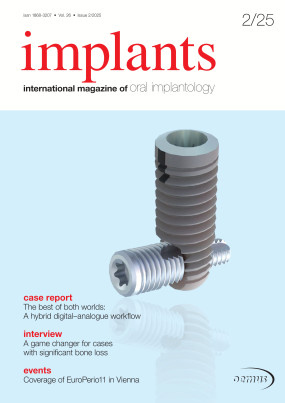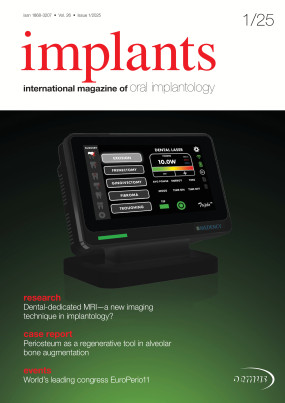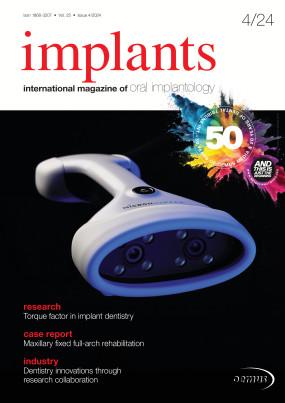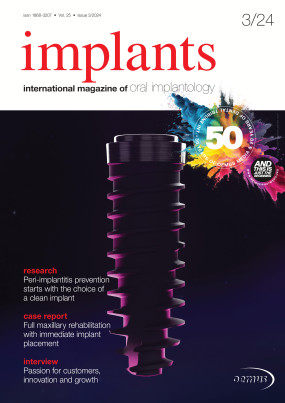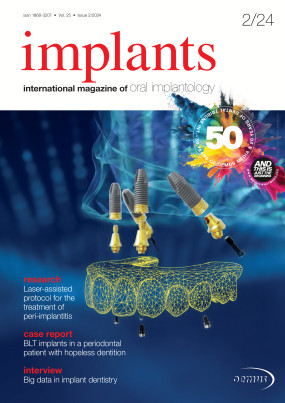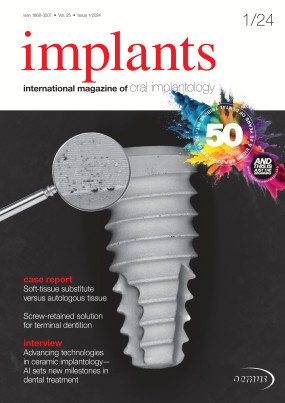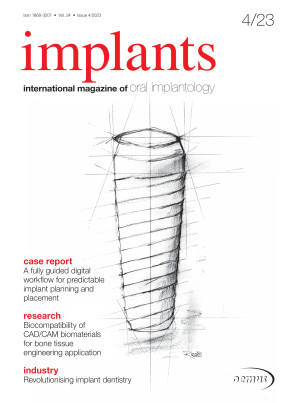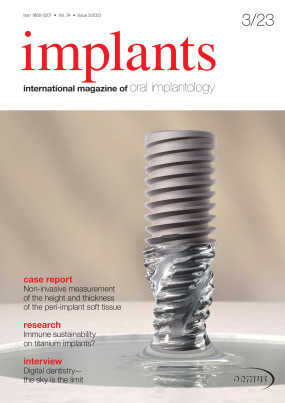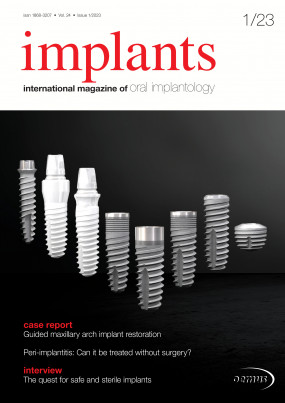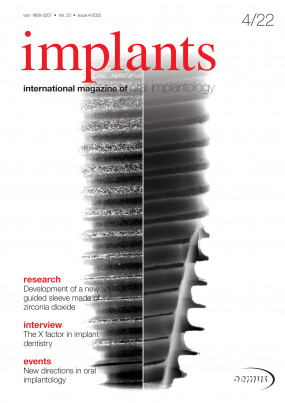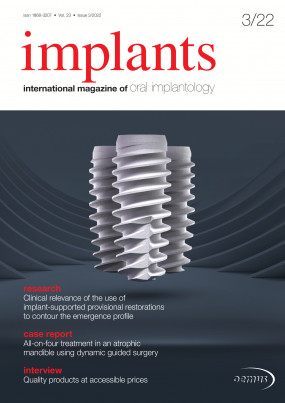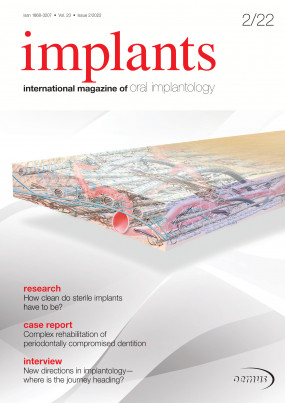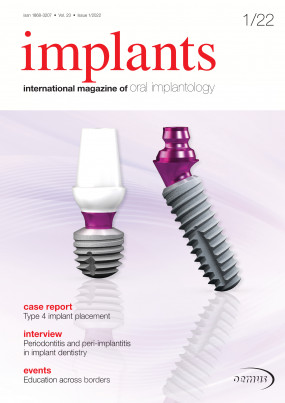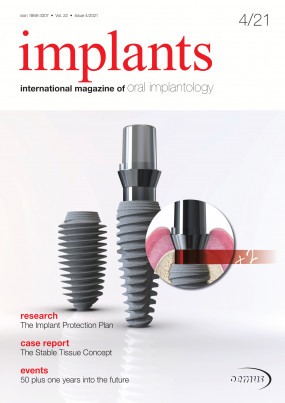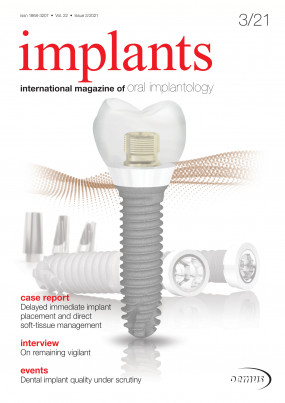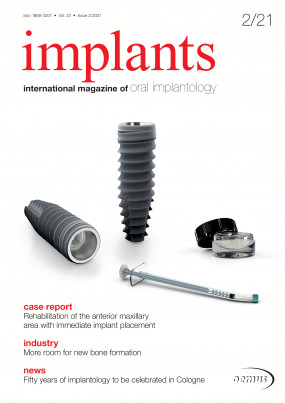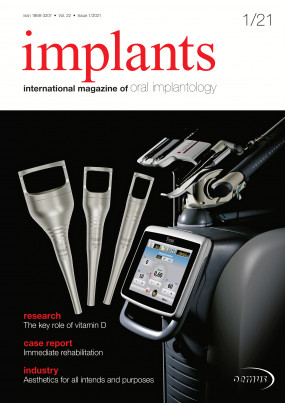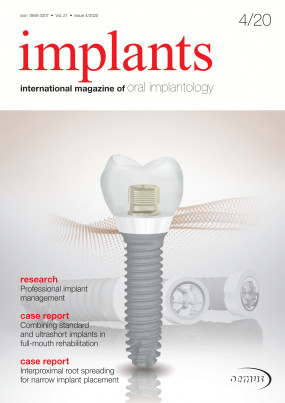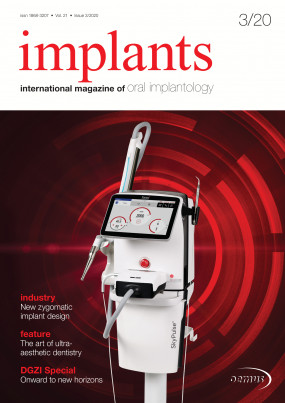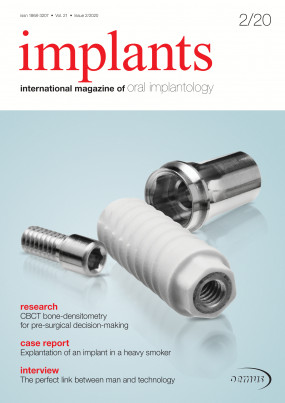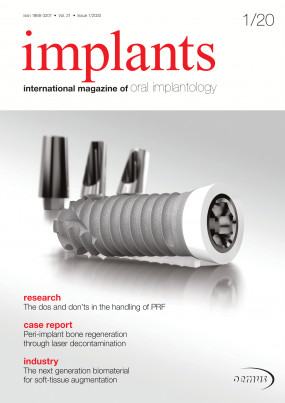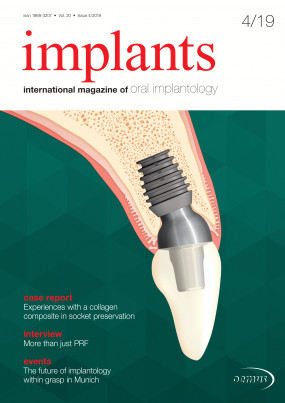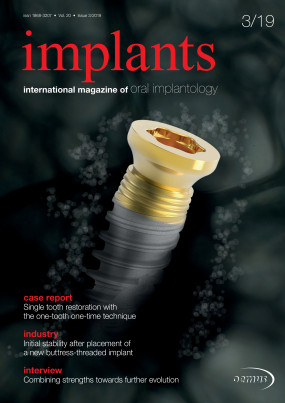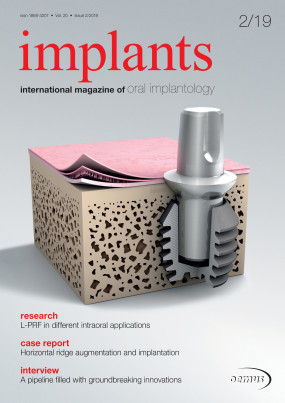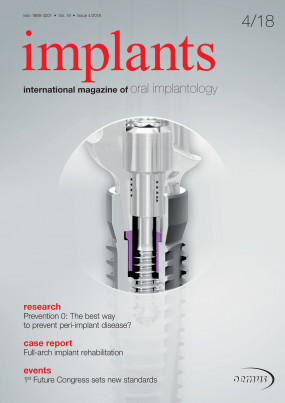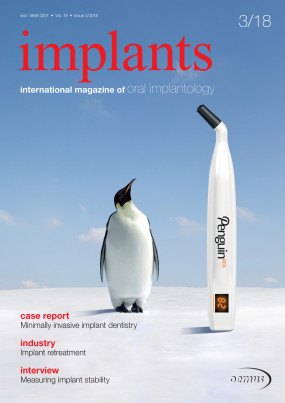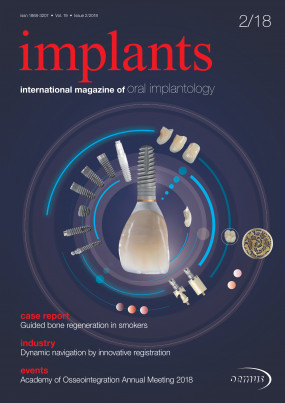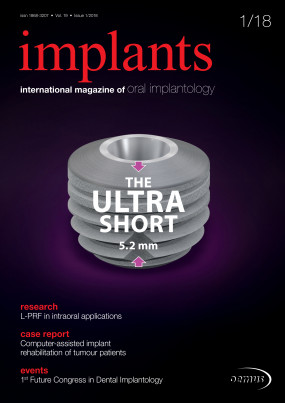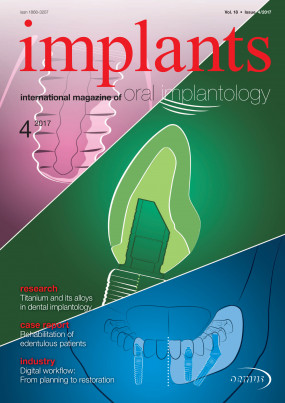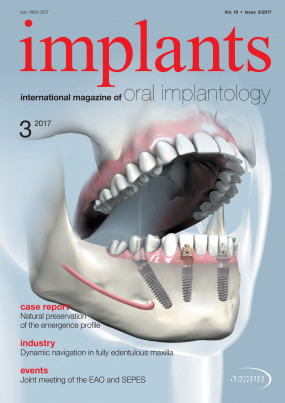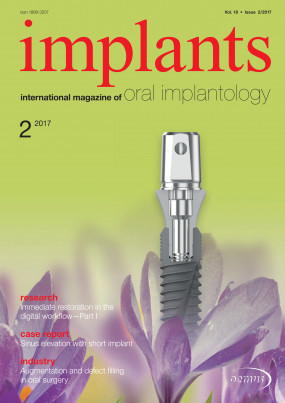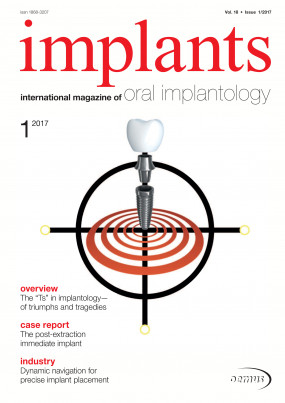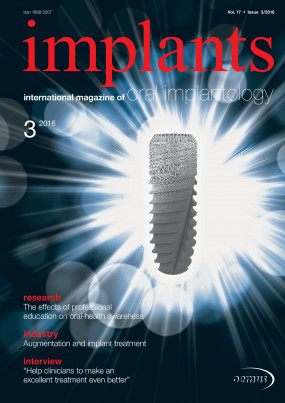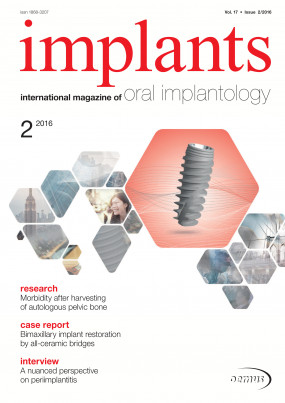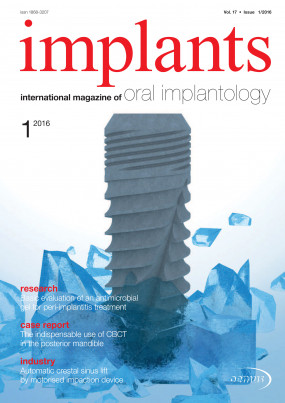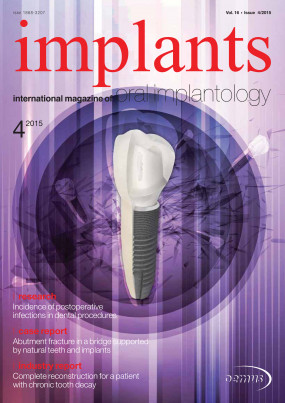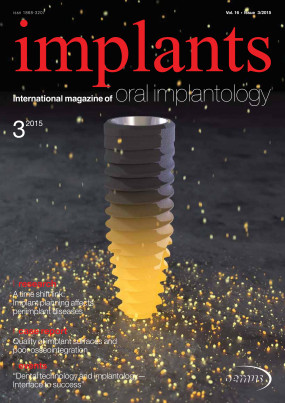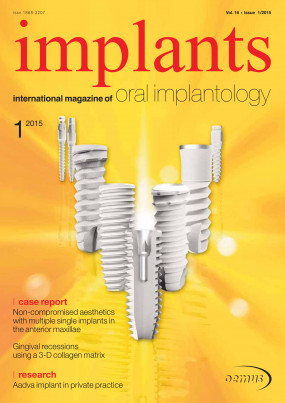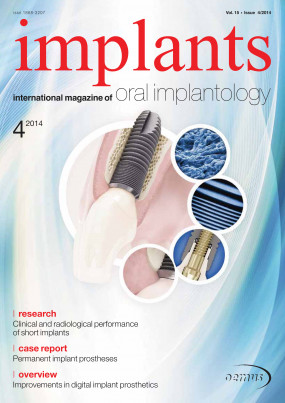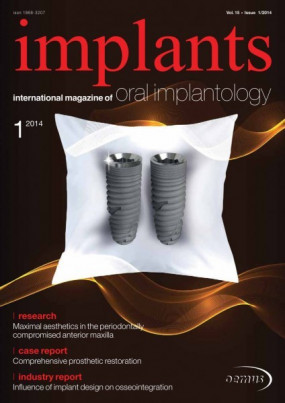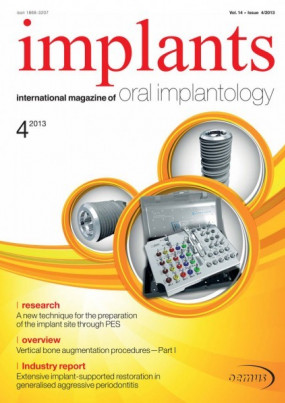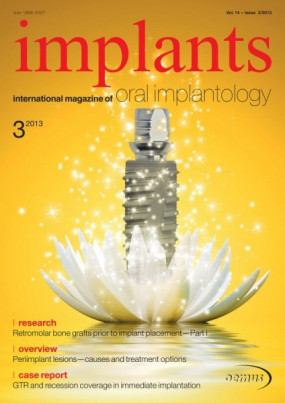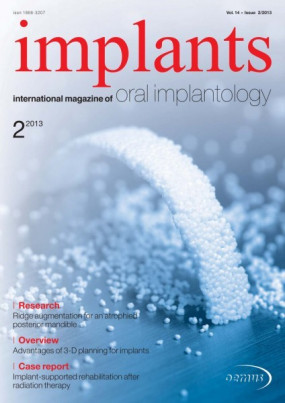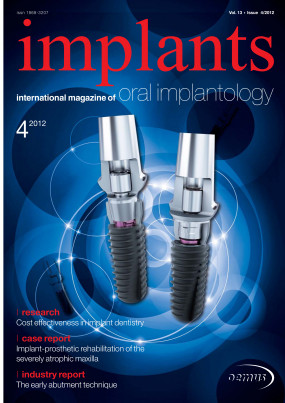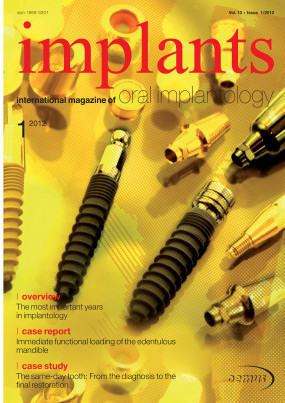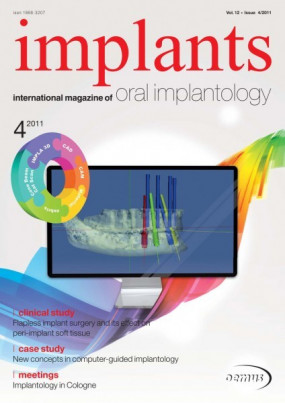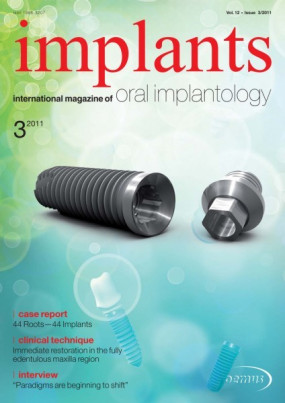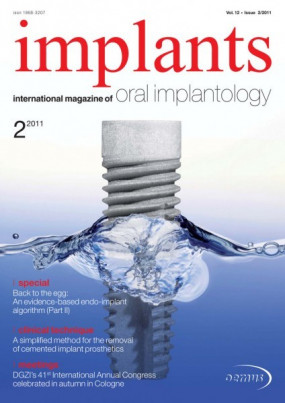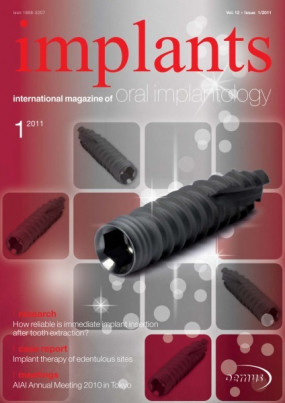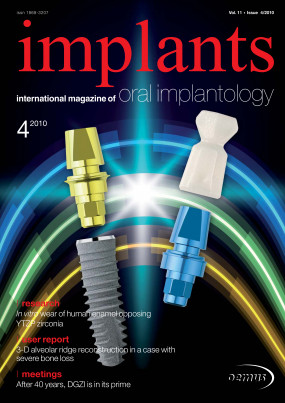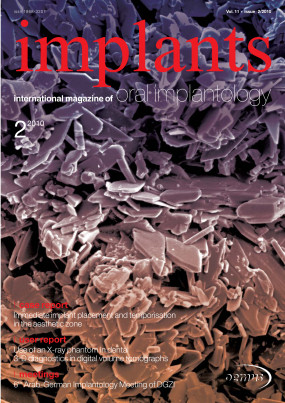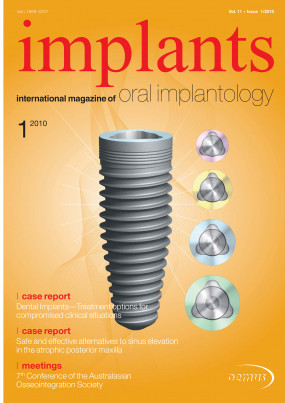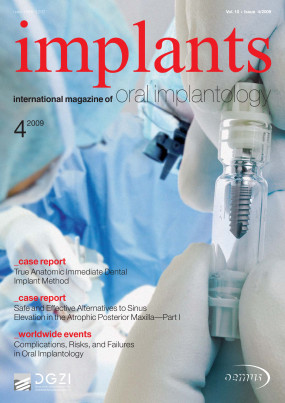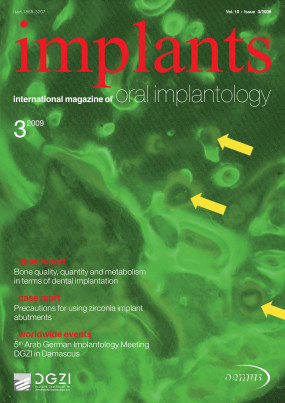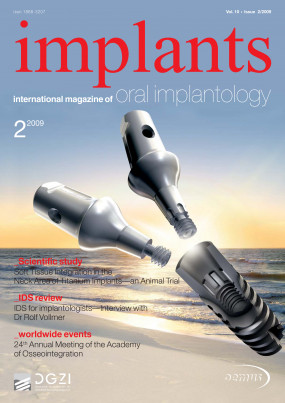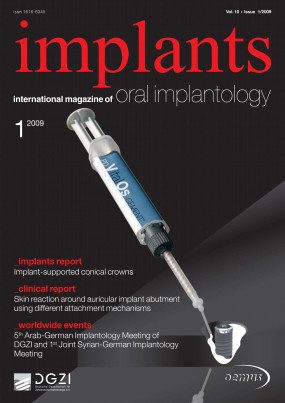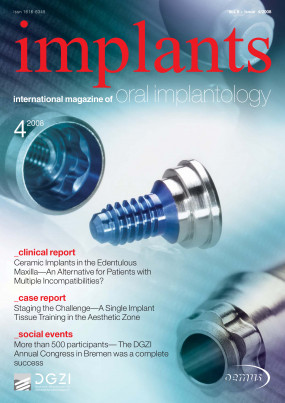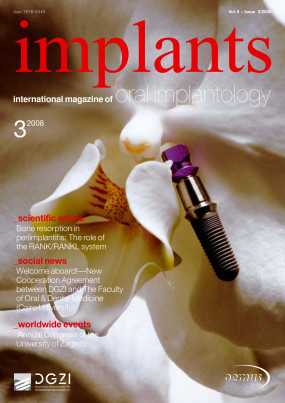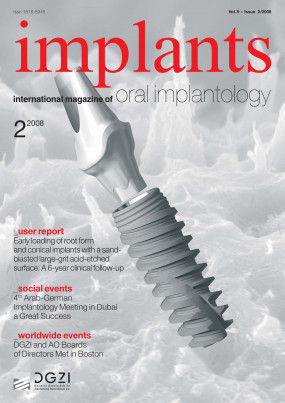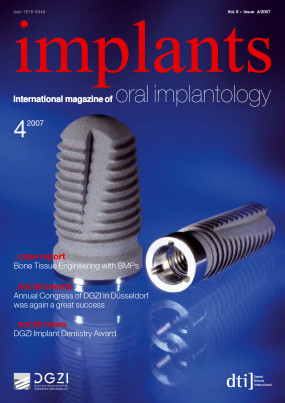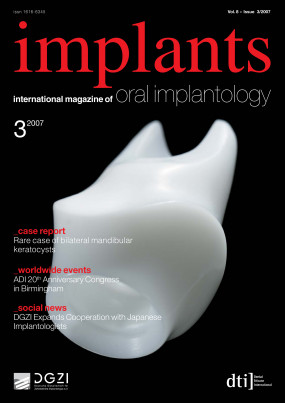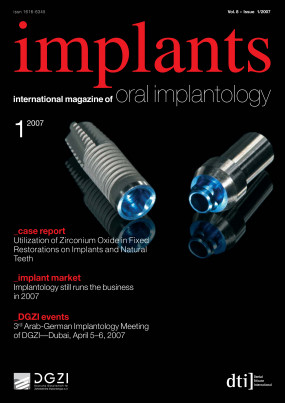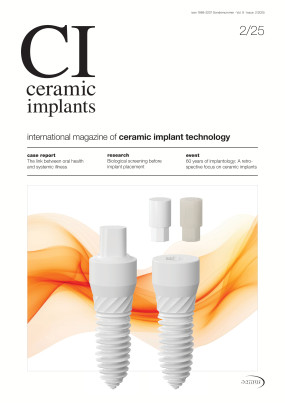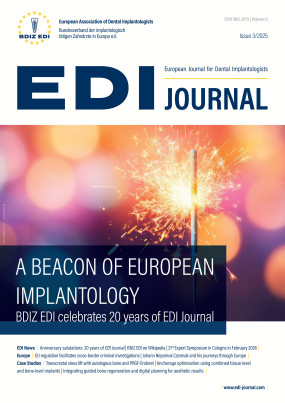Inhaltsverzeichnis
6
Successful immediate implant loading—According to the Socket Shield Technique
Dr Ramón Gómez Meda, Spain
In 2010 a novel approach to preserve the soft and hard tissues following tooth extraction was reported.1 Clinical studies had suggested that retaining roots of hopeless teeth may avoid tissue alterations after tooth extraction. The authors proposed the retention of a buccal aspect of the root during immediate implantation to prevent alveolar bone loss following tooth extraction. The proof-of-concept study in beagle dogs showed that retaining the buccal aspect of the root during implant placement does not appear to interfere with osseointegration and may be beneficial in preserving the buccal bone plate. Since then, the Socket Shield Technique has been further evaluated clinically in its application as originally described by Hürzeler et al. or in complex situations such as multiple adjacent implants with pleasing aesthetic results.1–4 ...
12
Rehabilitation of the anterior maxillary area with immediate implant placement
Drs Perla Della Nave & Alberto Vericat Queralt, Spain
The alveolar process and other tissues of the periodontium are tooth-dependent anatomical elements;1 in fact, tooth loss is followed by a cascade reaction of biological phenomena that cause progressive atrophy of both hard and soft periodontal tissue.2 Such atrophy is characterised on one hand by a total loss of the attachment fibres of the root cementum, the periodontal ligament and the bundle bone and on the other hand by vertical and horizontal volumetric alteration...
18
A new approach for patients ondirect oral anti-coagulant medication
Dr Stefan Grümer & Melissa Yüce, Germany
Implant placement is a surgical procedure employed in accordance with the individual wishes of patients. It can often be avoided by choosing conventional, non-surgical alternatives. In particular, in cases of patients with haemorrhagic diathesis or patients undergoing anti-coagulant therapy with direct oral anti-coagulants (DOACs), the risk of undesired side effects, with even life-endangering consequences, necessarily led to a strict selection of patients who are suitable for dental implants. A new laser-supported approach in implantology for patients undergoing anti-coagulant therapy has been developed by the Aachen Institute for Continuous Medical and Dental Education in cooperation with the Clinic for Cardiology, Pneumology, Angiology and Internal Intensive Medicine of the RWTH Aachen University hospital in Germany...
22
A male patient in his thirties presented with a submerged LL4 that was very mobile and had a poor prognosis. The patient was fit and well with no medical issues. He came to the practice on a recommendation and his main concern was the position of his teeth—he had an increased overjet and wanted straighter teeth. The patient’s dentition was healthy and his periodontal condition was good. Treat-ment options were discussed with the patient. These initially included no treatment or orthodontics—through either myself or a specialist orthodontist—to correct the position of the teeth, in addition to extraction and replacement of the LL4. Replacement options for the LL4 were also offered, including no treatment, dentures, a dental bridge or a dental implant...
26
A 46-year-old female patient with a non-contributory medical history presented for evaluation and treatment of swelling in her maxillary left quadrant. The intra-oral examination revealed moderate swelling and a buccal fistula 3 mm from the gingival margin of tooth #25 (Fig. 1). The radiograph revealed severe bone loss as a result of fracture and subsequent infection of tooth #25 (Fig. 2). Treatment planning included tooth extraction and subsequent tissue debridement. Tooth replacement with a dental implant was planned to be carried out once the site had regenerated...
28
Full-mouth implant reconstruction using zygomatic and standard implants
Dr James Kwok Fai Chow, China
Immediate implant insertion is indicated when treating patients with terminal dentition. In the case of full-arch implant reconstruction, clinicians usually couple immediate implant placement with immediate loading if the primary stability of these implants is adequate. If the residual bone volume is limited in the posterior maxilla, a zygomatic im-plant is often employed by experienced surgeons to mini-mise the extent of grafting and to support immediate loading. This article describes the dental implant treatment of an elderly lady who was suffering from terminal dentition. This patient had undergone full mouth clearance followed by double-arch immediate implant reconstruction using zygomatic and conventional implants...
34
The correct choice of biomaterials is crucial to achieve optimal clinical results—in functional, structural and aesthetic terms. The aim of any tissue regeneration technique, and bone grafting in particular, is to achieve for-mation of living and reactive tissue. This should be able to regenerate itself such that the mechanical and biological function is maintained sustainably...
